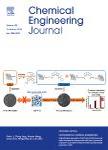版权所有:内蒙古大学图书馆 技术提供:维普资讯• 智图
内蒙古自治区呼和浩特市赛罕区大学西街235号 邮编: 010021

作者机构:Dongguan Univ Technol Sch Environm & Civil Engn Dongguan 523106 Guangdong Peoples R China Guangdong Univ Technol Sch Environm Sci & Engn Guangzhou 510006 Guangdong Peoples R China Univ Lorraine CNRS UMR 7564 Lab Chim Phys & Microbiol Environm 405 Rue Vandoeuvre F-54600 Villers Les Nancy France
出 版 物:《CHEMICAL ENGINEERING JOURNAL》 (化学工程杂志)
年 卷 期:2019年第357卷
页 面:376-383页
核心收录:
学科分类:0830[工学-环境科学与工程(可授工学、理学、农学学位)] 0817[工学-化学工程与技术] 08[工学]
基 金:National Science Foundation of China (NSFC) Qaidam Salt Lake Chemical Joint Research Fund Project of NSFC Qinghai Province State People's Government [U1507103]
主 题:Nitrogen-dope 3D carbon frameworks Lithium-ion batteries Template-free method
摘 要:Finding novel anode materials in place of the current commonly used but performance-limited graphite is the top priority for the remarkable development of lithium-ion batteries (LIBs). Although impressive reports have been published, certain problems, such as complicated synthesis processes, limited production, high cost of raw materials, and lack of truly durable and high-capacity performance, are still hindering the actual applications of LIBs. In this work, we report a mass-produced 3D nitrogen-doped carbon framework (NCF) that uses low-cost polyacrylonitrile (PAN) as the precursor. A simple sol-gel method is used to prepare the anode materials for ultra-long life LIBs, through which 24.35 g samples can be easily prepared at the laboratory level. This method also ensures that samples with certain morphologies, crystal structures, and nitrogen of specific contents and species can be prepared by the simple control of the pyrolysis temperature. Benefitting from the unique structure, NCFs-800 exhibits excellent rate performance, with its lithium ion storage capacity maintained as high as 41.4% from 675 mAh g(-1) to 279 mAh g(-1) when the current density increases 100-fold from 0.1 A g(-1) to 10 A g(-1). Furthermore, the electrode of NCFs-800 possesses an ultra-long lifespan of over 10,000 cycles with stable capacity retention exceeding 54%, corresponding to a remarkably slow capacity loss of 0.0046% per cycle. After deep cycling at 10 A g(-1), a relatively high capacity of 124 mAh g(-1) can be retained, which is consistent with the theoretical capacity of cathode materials. Therefore, this kind of material is perfect for industrialization, given the low cost of raw materials, easily scaled up methods, and excellent lithium storage performance.